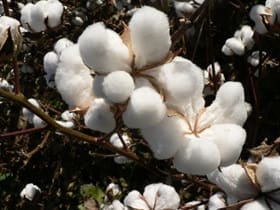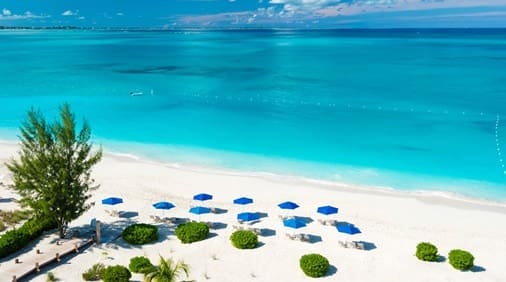INTRODUCTION
The Turks and Caicos Islands are a British Overseas Territory consisting of 40 low-lying coral islands in the Atlantic Ocean. The Territory is spread over nine inhabited islands. There are about 100 named islands and cays in the Turks and Caicos. With a population of 55,926, it is the third largest of the British Overseas Territories by population. The Turks and Caicos Islands were inhabited for centuries by native Amerindian peoples.
Luxury tourism is the primary source of income to the Turks and Caicos. There’s a wide range of places to stay across the islands, including expansive all-inclusive resorts, quiet hotels and luxurious rental villas. The gateway island of Providenciales, known as Provo, is home to expansive Grace Bay Beach, with luxury resorts, shops and restaurants.
HISTORY
Initially the Turks and Caicos Islands were inhabited by Taino and Lucayan peoples. From the mid-1600s Bermudian salt collectors began seasonally visiting the islands, later settling more permanently with their African slaves. During the 16th, 17th and 18th centuries, the islands passed from Spanish, to French, to English (subsequently British) control. But subsequently , the islands were claimed by several European powers with the British Empire eventually gaining control.

It is commonly thought that it was the British Loyalists who brought cotton to the Caicos Islands from the United States towards the end of the 18th century. The economy of the Turks and Caicos has stumbled along for centuries relying on the salt, cotton and hemp industries which barely made any significant impact on the islands. Wild Sea Island cotton can still be seen growing along the side of the road on most of the Caicos Islands, testament to a bygone but noteworthy era in the history of the Turks and Caicos.
COSTUME
The dresses of women were long and hung around the calf and ankle. They were usually tied, gathered, or hung loose at the waist. The sleeves were both long and short with a modest collar. In the Caicos Islands, sometimes pants were worn under the dresses as protection from mosquitoes and bugs. Materials and fabrics such as cotton, denim, oznerburg cloth, flour bags, khaki, croca sacks, drill, and chambray were all used to make clothes. Headscarf’s and handmade wide-brim straw hats, made from the dried leaves of the Silver Palm top, were worn to provide protection from the sun while working in the fields or bagging salt. In the Caicos Islands, both women and men wore slippers made from leaves or grass, but the majority of the people worked barefoot. In later years, handmade shoes called Womper, made from washed-up materials — came into fashion.
The men of Turks and Caico’s wore simple shirts and loose pants, which they rolled up to the calf or knee while they worked. Belts or a piece of rope kept their pants up. Shirts had both short and long sleeves, which were also rolled up while working.
 The national costume of Turks and Caicos is white with 6 bands of colour; 2 on each arm and 4 around the hem of the dress or 3 on each arm of the shirt for the men. Each colour represents a different island or cay in the archipelago and is taken from a particular characteristic which is popular or common on that island. The costume is finished off with a straw hat which is woven by the locals from palm fronds. Red for Grand Turk which symbolised the reddish fruit of the national plant which is head cactus. Orange for south and East Caicos representing the colours of the spinny lobster and the fishing industry in the south Caicos. White for Salt cay and colour of salt. Green for north Caicos and parrot cay which are home to fruit trees and the fertile soil where cotton grows. Tan for the middle Caicos representing the craft of basket weaving, straw hats and brooms. Turquoise for the Providenciales, Pine Cay, West Caicos because the colour of the surrounding water is Turquoise. Pink was chosen to represent the beautiful conch shell, flamingos and the numerous uninhabited cays that make up our chain of islands. Yellow represents God’s glory as the sun shining down on all our beautiful islands and cays. The sun also contributes to our newest industry, tourism.
The national costume of Turks and Caicos is white with 6 bands of colour; 2 on each arm and 4 around the hem of the dress or 3 on each arm of the shirt for the men. Each colour represents a different island or cay in the archipelago and is taken from a particular characteristic which is popular or common on that island. The costume is finished off with a straw hat which is woven by the locals from palm fronds. Red for Grand Turk which symbolised the reddish fruit of the national plant which is head cactus. Orange for south and East Caicos representing the colours of the spinny lobster and the fishing industry in the south Caicos. White for Salt cay and colour of salt. Green for north Caicos and parrot cay which are home to fruit trees and the fertile soil where cotton grows. Tan for the middle Caicos representing the craft of basket weaving, straw hats and brooms. Turquoise for the Providenciales, Pine Cay, West Caicos because the colour of the surrounding water is Turquoise. Pink was chosen to represent the beautiful conch shell, flamingos and the numerous uninhabited cays that make up our chain of islands. Yellow represents God’s glory as the sun shining down on all our beautiful islands and cays. The sun also contributes to our newest industry, tourism.
The National Dress of the Turks & Caicos Islands symbolizes the humble, hard-working life of our ancestors, who raked the salt ponds, toiled in the fields on the various plantations, fished the oceans and harvested conch and sponges on our many islands
References
https://turksandcaicostourism.com/
https://www.visittci.com/about
https://www.exceptionalvillas.com/blog/turks-and-caicos-history/
https://myturksandcaicosblog.com/?p=879
https://www.wcmt.org.uk/sites/default/files/migrated-reports/1044_1.pdf
https://www.timespub.tc/2003/04/dressing-up-the-islands-the-story-behind-the-national-costume/

